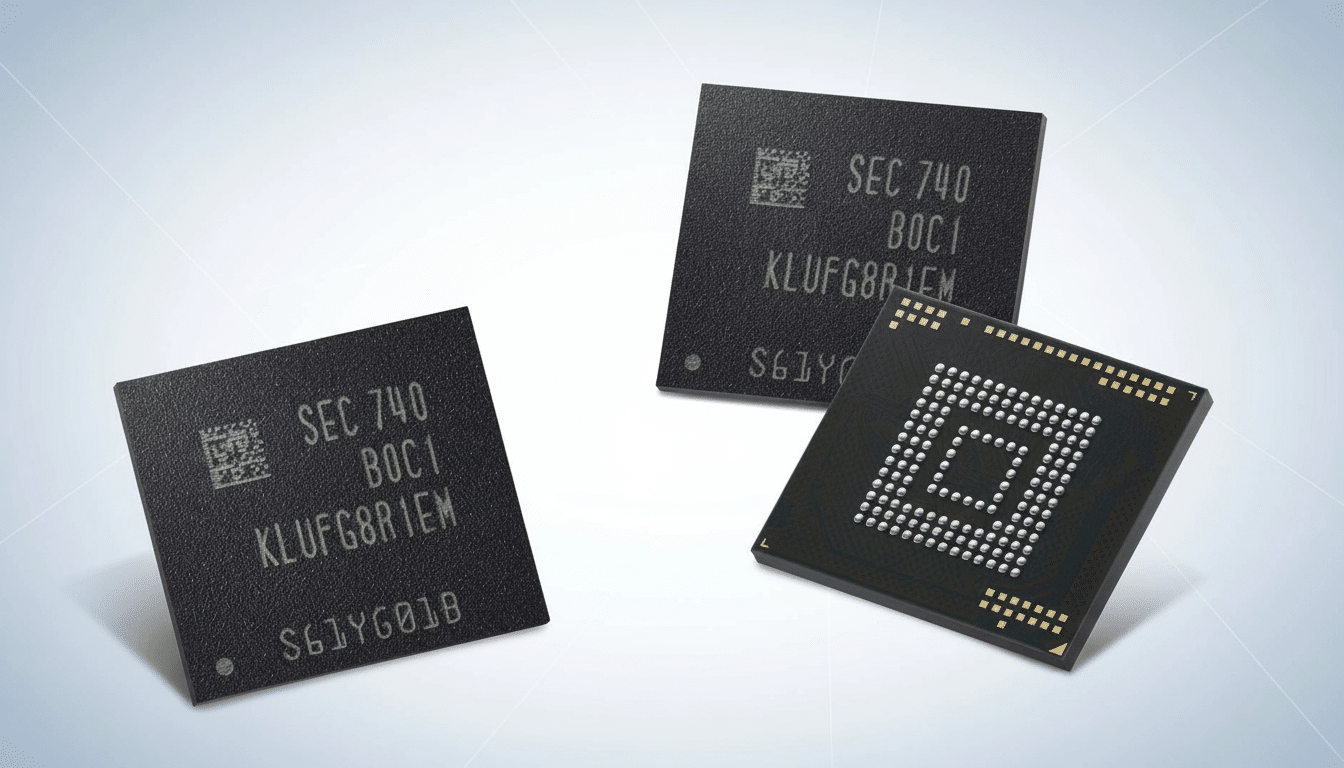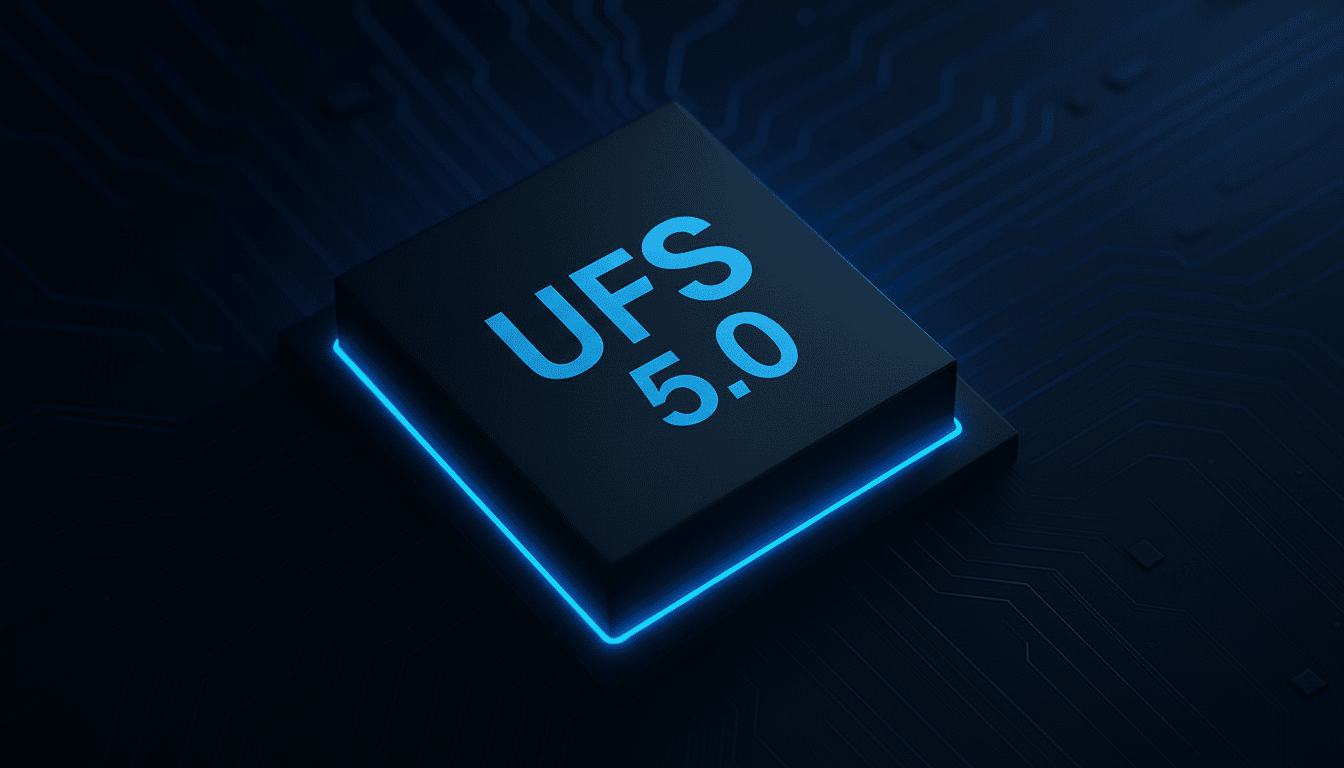Smartphone and embedded storage have two new families for the next generation. Standards body JEDEC has officially approved Universal Flash Storage 5.0, bumping peak bandwidth to 10.8GB per second — nearly double UFS 4.0’s ceiling of 5.8GB per second. The leap focuses on exactly what modern devices need: speedier launching of apps, higher frame-rate sensor capture, and much lower latency for on-device AI inference.
What UFS 5.0 Changes, and What It Doesn’t
UFS 5.0 is what JEDEC calls a performance-forward update that has been engineered to keep the lowest power draw of its base and carry over UFS 4’s deep pipelining and queuing model while reusing many of the data-transfer-specific features in UFS 3.

The headline figure is an increased peak sequential transfer rate of up to 10.8GB/s, freeing up more headroom for read-heavy instructions such as model loading, 8K video workflows, and game streaming assets.
More than just pure speed, the spec focuses on cleaner signal paths and overall system-level robustness. JEDEC notes that this will deliver better noise isolation between the physical layer (PHY) and memory subsystem, simplifying board design at aggressive frequencies while also maintaining peak throughput when processing real-world electromagnetic interference. The standard also introduces inline hashing, allowing integrity verification at line rate to safeguard user data without any additional overhead.
The Importance of Faster Storage for On-Device AI
AI on device is storage-bound more than we’d like to admit.
Giant language models and multimodal pipelines are usually quantized into files that are several gigabytes in size. If you’re going to load a 4GB 4B model with data over storage, it’s certainly a good metric: at UFS 4.0 practical read speeds of about 3–4GB/s, that’s equivalent to about one second; at UFS 5.0’s maximum possible read speed of 10.8GB/s, we could theoretically be looking at maybe a third of a second under ideal conditions for the same load. That delta only adds up when jumping back and forth between models or fetching embeddings, or cold-starting AI assistants.
UFS sits between RAM and persistent memory, providing NPUs, GPUs, and CPUs with data fast enough to keep accelerators fueled. Faster sequential and mixed I/O throughput shortens pre-filling stages for text generation, accelerates image diffusion steps that stream weights and tensors, and minimizes the “thinking” gap users experience when calling on-device summaries, translations, or camera-enhanced features.
Ecosystem and Adoption Factors for UFS 5.0
Storage isn’t solely what determines the performance of a system; it’s necessary that the host controller inside a mobile SoC supports the new standard in order to expose these gains. We would expect to see UFS 5.0 deployment to be dependent on its integration by platform vendors such as Qualcomm, MediaTek, and Samsung, as well as memory suppliers like Samsung, SK hynix, Micron, and Kioxia. Early shipping products may also mix generations here, so some high-end devices could be seen offering UFS 5.0 and next-gen NPUs, while cheaper mid-range offerings might make a more modest jump to 4.0 or 3.1.

The initial burst of flagships usually have the latest UFS, then the wider Android spread comes along. Some high-profile phones continued launching with UFS 3.1 months after UFS 4.0 arrived, highlighting that, just as much as the spec itself, it’s supply-chain readiness and platform cost that dictate when we’ll see this tech in new devices.
Security, Stability And Power Efficiency
JEDEC’s work on inline hashing at the storage level increases data integrity without the power or latency impact incurred when higher-level software checks occur. UFS 5.0 also enables improved signal integrity to maintain peak transfers more reliably — a key concern when devices are heated up or under load from simultaneous camera, AI, and 5G usage.
Power remains a first-class concern. “This next spec makes the link faster, but it’s designed for power efficiency per performance, so you can run bigger models on devices or even high-bitrate media and still maintain battery life,” they wrote. In layman’s terms, that translates to fewer throttling cliffs and more consistent frame rates in content creation as well as the gaming workloads that really pound on storage.
Real-World Expectations for Devices With UFS 5.0
Laboratory peak speeds don’t always translate 1:1 to user benchmarks, but UFS 5.0 should raise the floor and the ceiling here too. The latest UFS 4.0 phones have been seen obtaining approximately 3.0–4.2GB/s sequential reads in public tests; UFS 5.0 systems can achieve higher numbers and, on average, improve mixed and random I/O patterns which affect how fast apps open up or how quickly an AI-based prompt might respond back to you.
Faster storage means less friction — ensuring a multi-gigabyte photo library, RAW burst buffer, or 8K footage scrub confidently without lag and delay. For the average user, that difference will mean shorter waits: less time waiting for models to load up, fewer pauses while trying to generate an image or transcribe your voice on a device, and fewer hiccups as you use apps with AI assistants running in the background.
Bottom Line: What UFS 5.0 Means for Your Devices
UFS 5.0 is a cutting-edge, AI-first storage upgrade that delivers increased peak bandwidth of nearly double, while hardening data integrity and elevating signal resilience without a loss in power efficiency. In the near future, then, as more SoC and memory brands take controllers and modules to market, users of flagship phones, handheld PCs, or high-end wearables will leverage that headroom for snappier AI features and faster everyday performance. That bottleneck is starting to shift — and that means less wait, more go.

